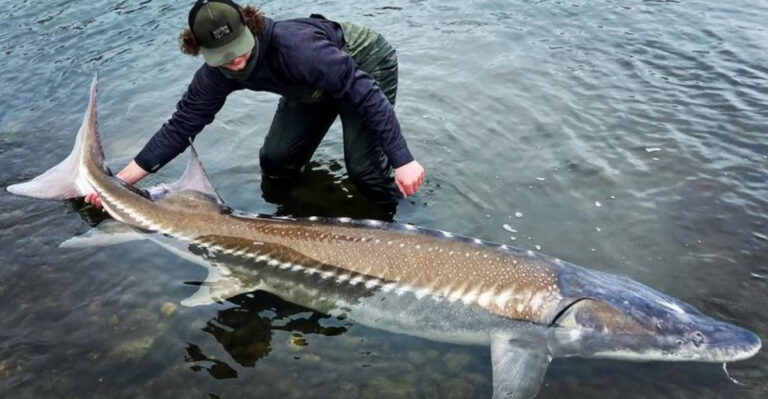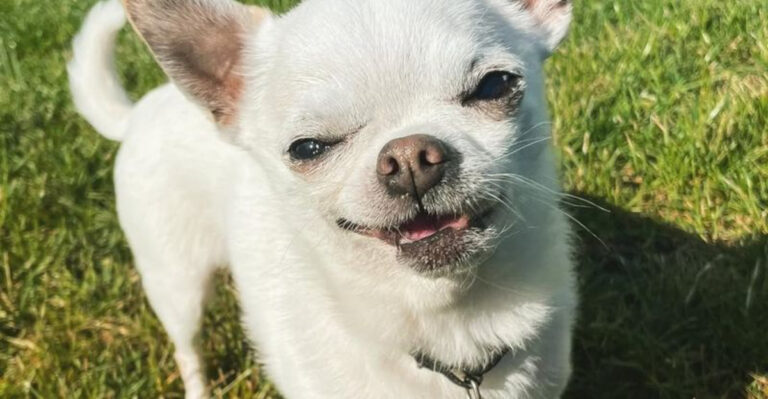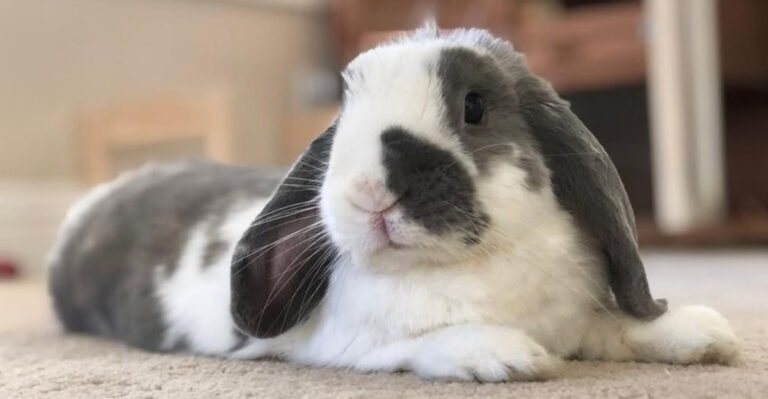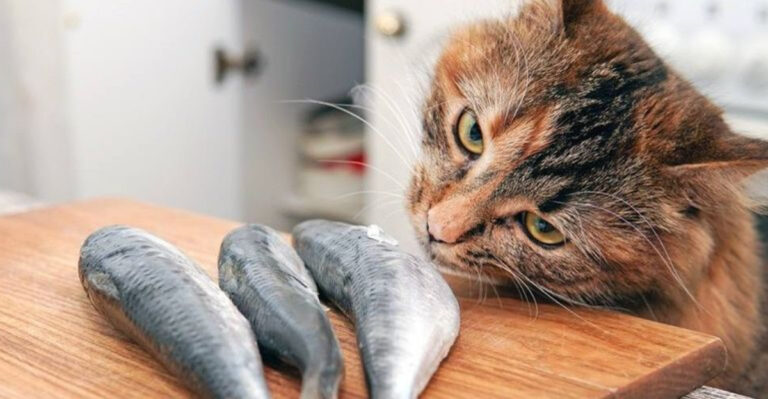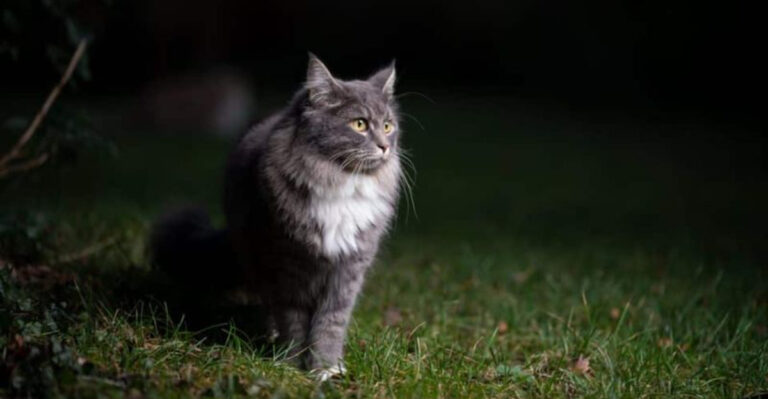20 Worst Dog Breeds For Multi-Pet Households
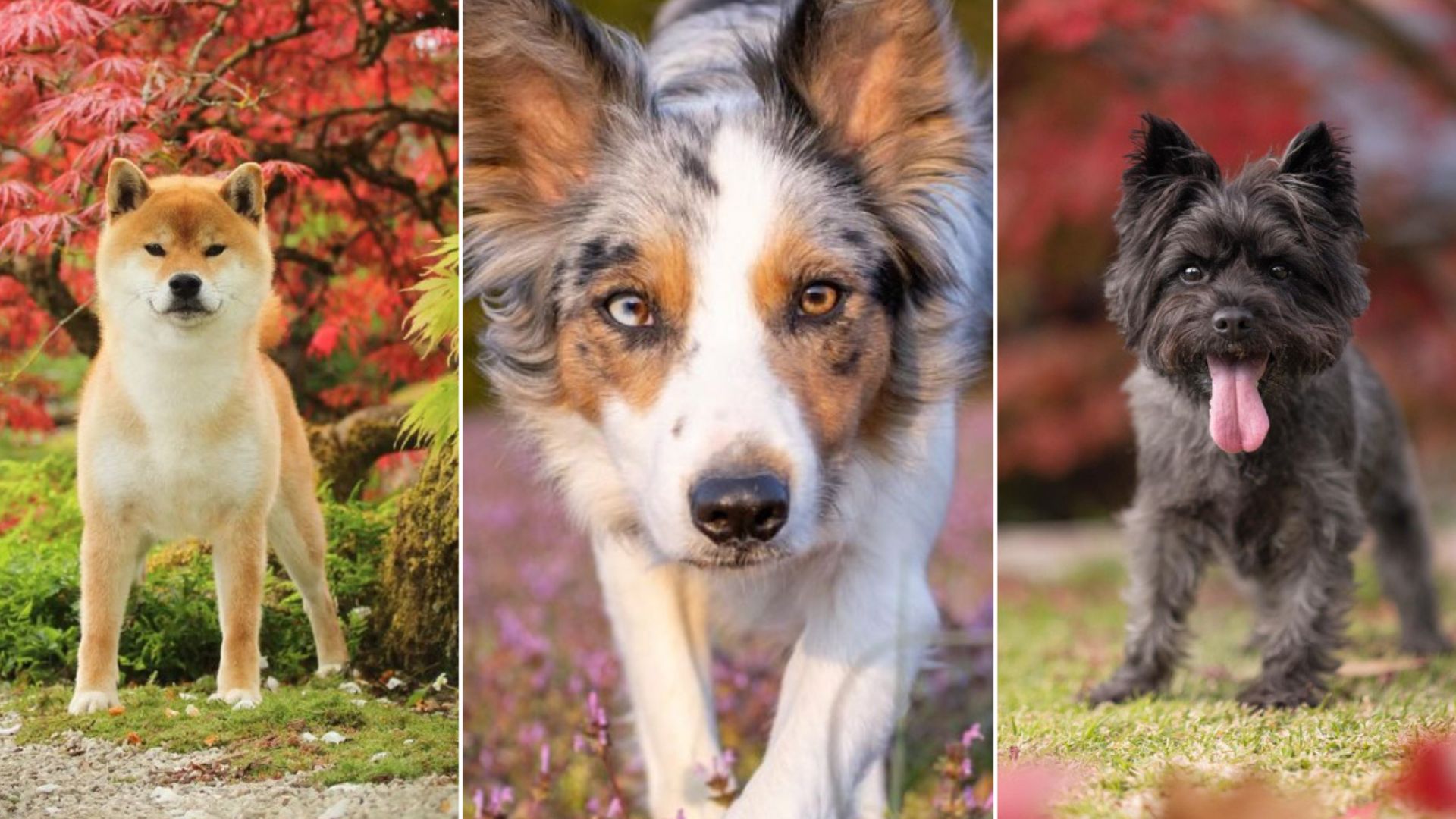
Bringing a new dog into a home bustling with other pets can be an adventure of epic proportions – or a recipe for chaos.
Not all dog breeds are cut out for the multi-pet lifestyle, though. Some breed traits can clash tremendously with the presence of other four-legged (or winged) family members.
From protective tendencies to a penchant for being the center of attention, these breeds might be more at home in a household where they can rule the roost solo.
1. Chihuahua
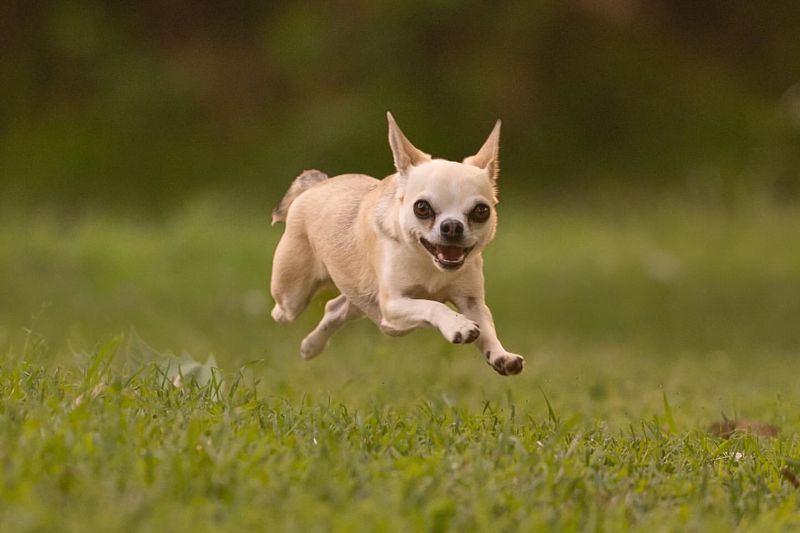
This charming little dog can be a bit of a drama queen, often requiring the spotlight all to itself. In a multi-pet household, a Chihuahua might see other pets as rivals instead of pals, leading to endless squabbles over attention and affection.
A Chihuahua is not afraid to assert its dominance, which can be quite a challenge when other pets are in the mix. Its territorial nature might spark conflicts, especially with other small animals. Cat owners, be wary! This breed may not take kindly to sharing its space or you.
Training a Chihuahua to coexist peacefully with other pets requires patience and a firm hand. Owners must establish boundaries and ensure the Chihuahua knows it’s not the ruler of the house. This breed thrives best in a calm, controlled environment where it doesn’t feel threatened by other pets vying for its spot in your heart.
2. Dachshund
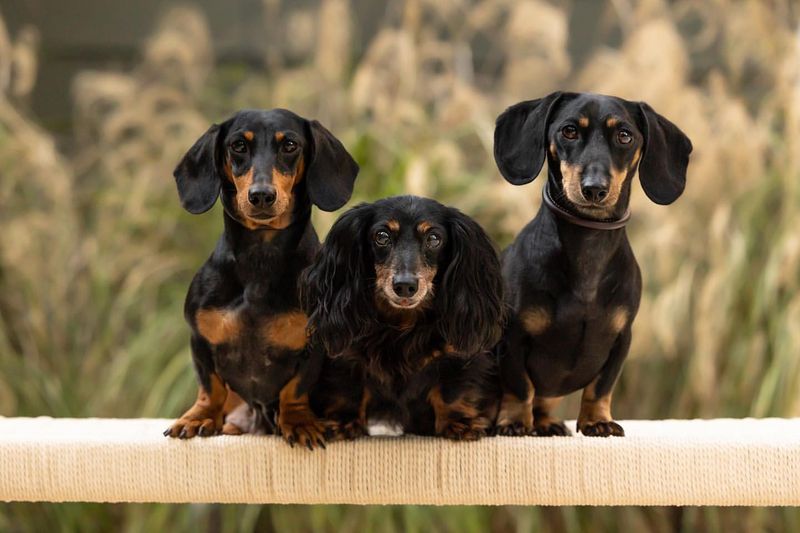
The Dachshund, known for its long body and short legs, has a hunting background that might not mesh well with a multi-pet household. Originally bred to chase small game, this breed has a strong prey drive. This means that smaller pets like rabbits or guinea pigs might just be seen as the next target in a game of chase.
When it comes to cohabitation, a Dachshund’s stubborn nature can be a hurdle. Their fearless attitude, though endearing, can lead to unnecessary skirmishes with larger dogs. This breed does not back down easily, making harmony in a diverse pet household a bit elusive.
To foster a peaceful environment, early socialization is key. Dachshund owners should introduce them to other pets gradually, reinforcing positive interactions with treats and praises. While the Dachshund can be a loving companion, ensuring they understand their place in the household hierarchy will help maintain the peace.
3. Jack Russell Terrier
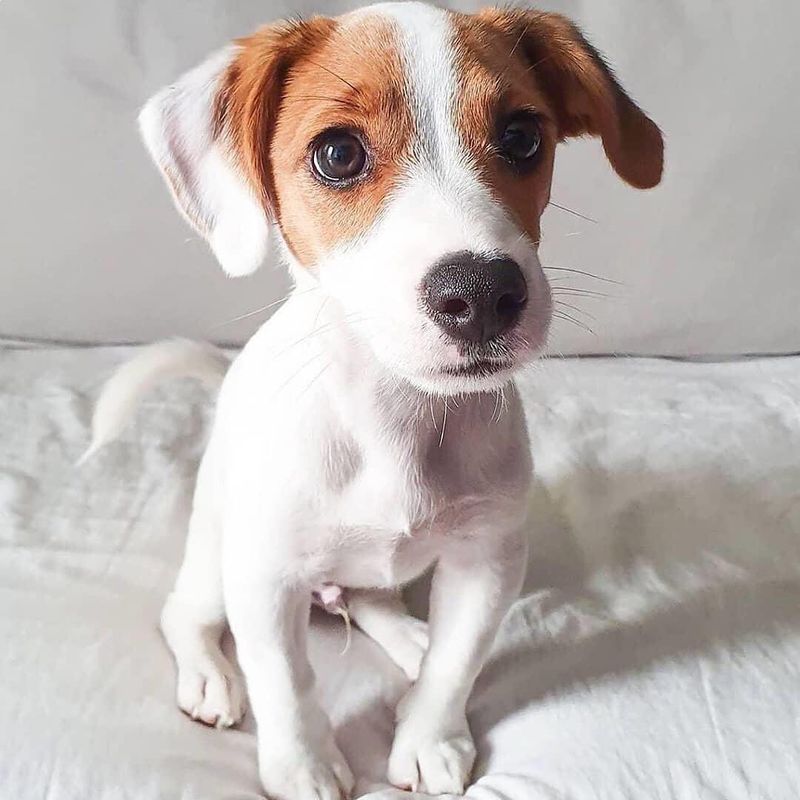
This energetic bundle of joy might not be the best choice for a multi-pet household. This breed is renowned for its lively spirit and high energy levels, which can become overwhelming for more laid-back pets.
With a strong instinct to hunt, Jack Russells often view smaller animals like hamsters or birds as prey rather than friends. Their boundless curiosity and tenacity make them persistent, sometimes bordering on relentless in pursuit of what piques their interest.
To keep a Jack Russell happy in a multi-pet setting, constant supervision and structured activities are essential. Engaging them in agility training or fetch games can burn off excess energy and reduce the chances of them bothering other pets. Proper training and early socialization can help mitigate these issues, but it requires commitment and consistency from the owner.
4. Alaskan Malamute
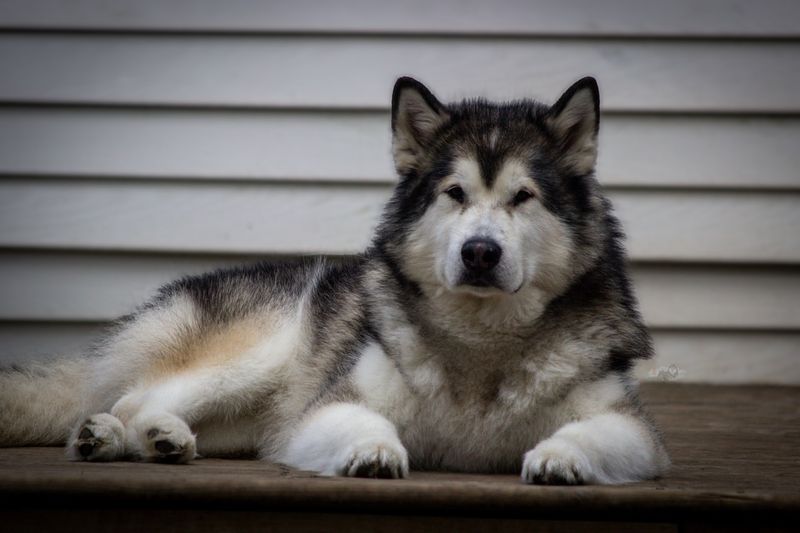
The Alaskan Malamute, with its stunning wolf-like appearance and strong build, can be a handful in a home with multiple pets. This breed is known for its pack mentality, which can cause friction with other pets that don’t automatically fall in line.
With a strong prey drive, Malamutes may not coexist well with smaller animals, seeing them as quarry rather than companions. Their size and strength mean they require an owner who can handle their sometimes overbearing presence.
Successful integration into a multi-pet household requires diligent training and socialization. Alaskan Malamutes need firm leadership to understand their role within the family pack. Regular exercise and mental stimulation are crucial, as a bored Malamute can become destructive, further complicating life with other pets.
5. Shiba Inu
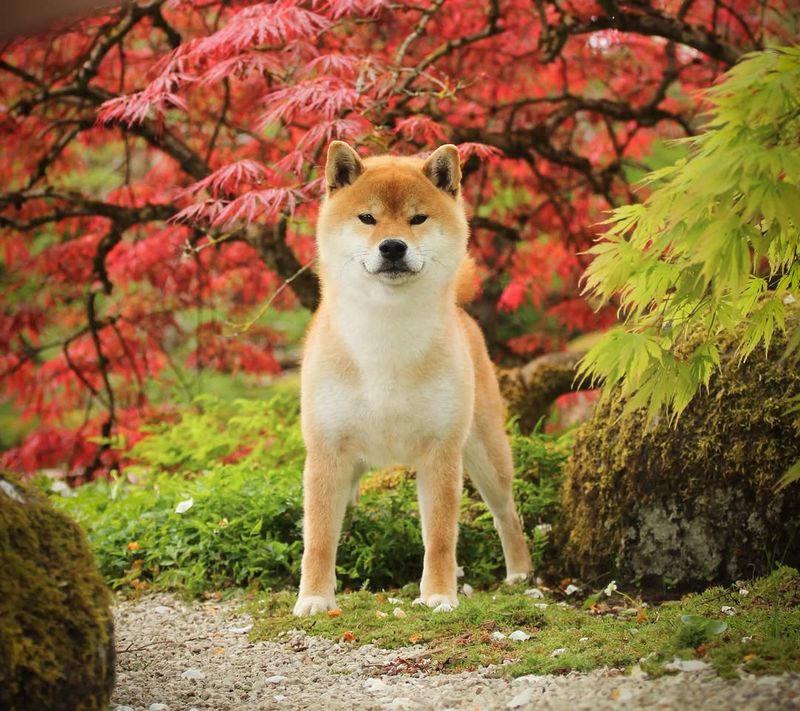
Known for their fox-like appearance and bold personality, Shiba Inus are a fiercely independent breed. This breed often prefers to do things its own way, which can be tricky in a household with other pets.
While they can be affectionate with their owners, Shiba Inus are not always tolerant of other animals. Their aloof nature can lead to conflicts, especially with pets that seek constant social interaction. This breed’s strong-willed demeanor can sometimes translate into stubbornness, making training a challenge.
For a harmonious multi-pet home, Shiba Inu owners must enforce early and consistent training. Ensuring the Shiba Inu understands boundaries and interacts positively with other pets is crucial. This breed thrives on routine and may require a space they can claim as their own to retreat to when they need a break from the household hustle and bustle.
6. Akita
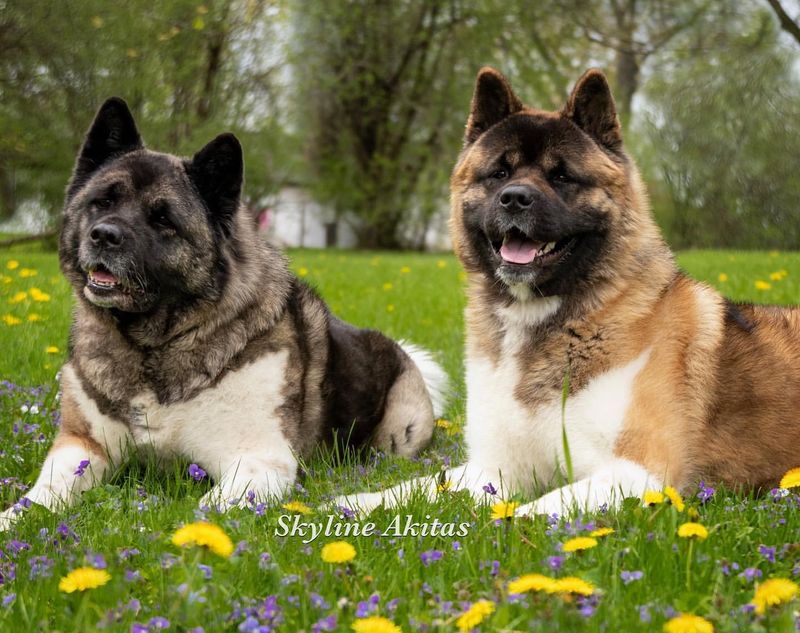
The Akita, a breed that embodies loyalty and dignity, might not be the easiest fit for a multi-pet household. Known for their protective nature, Akitas can become overly possessive of their family and space, leading to tension with other pets.
This breed tends to be wary of strangers, including unfamiliar animals. Their dominant personality requires an owner capable of establishing clear rules and boundaries. Without proper guidance, an Akita might challenge other pets, asserting its dominance in ways that disrupt household harmony.
To avoid conflicts, early socialization and firm training are essential. Akitas need to learn how to share attention and space. Providing them with plenty of exercise and mental challenges can help reduce the urge to control their environment, creating a more peaceful coexistence with other pets.
7. Basenji
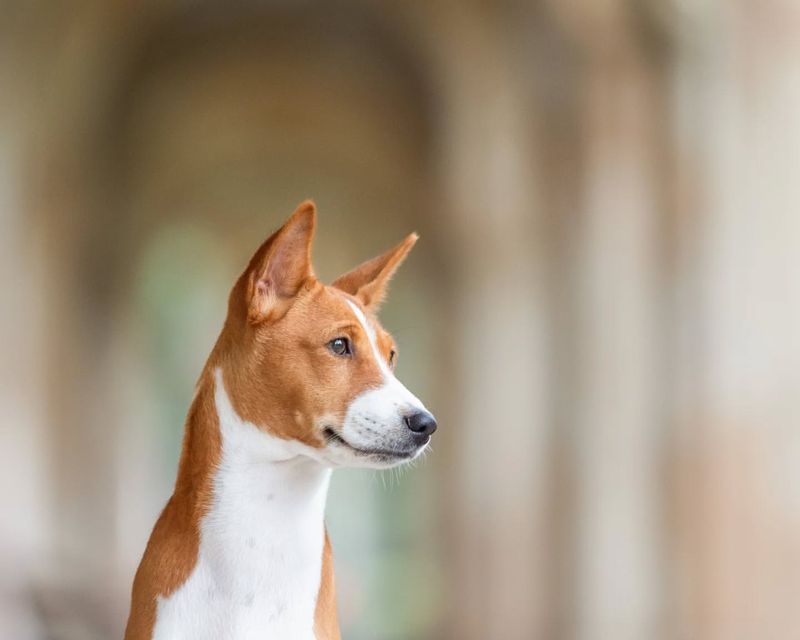
The Basenji, often referred to as the “barkless dog,” is as unique as it is challenging in a multi-pet environment. With a hunting heritage, Basenjis have a strong prey drive and can become fixated on smaller animals, complicating life in a diverse pet household.
This breed’s independent nature means they might not always respond well to commands, especially in distracting environments or when other pets are involved. Their intelligence can lead to mischievous behavior if not properly engaged.
For a Basenji to thrive in a home with other pets, early socialization and a structured routine are crucial. Engaging them with interactive toys and activities that challenge their minds can help satisfy their curious nature and minimize conflicts. Owners should be prepared for a pet that enjoys exploring and requires consistent boundaries.
8. Dalmatian
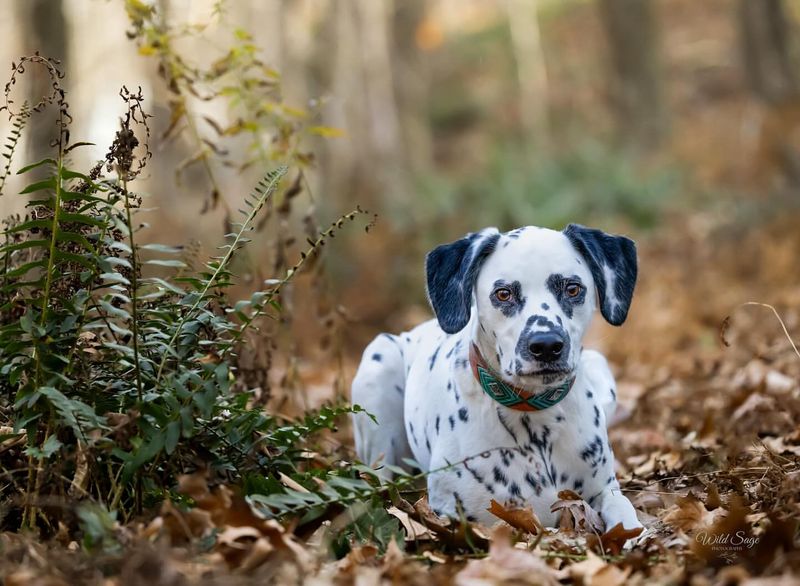
Famous for their unique spots and boundless energy, Dalmatians can be a bit much for a multi-pet household. This breed is notoriously active and thrives on physical and mental stimulation, which might be overwhelming for more relaxed pets.
Known for forming strong bonds with their human family, Dalmatians can become possessive, sometimes viewing other pets as competition. Their energetic nature can lead to playful roughhousing that doesn’t sit well with all animal companions.
To keep a Dalmatian happy and well-behaved, ample exercise and training are essential. Owners should establish a routine that allows these energetic dogs to burn off excess energy. Introducing Dalmatians to other pets early and fostering positive interactions can minimize rivalry and promote a harmonious living environment.
9. Chow Chow
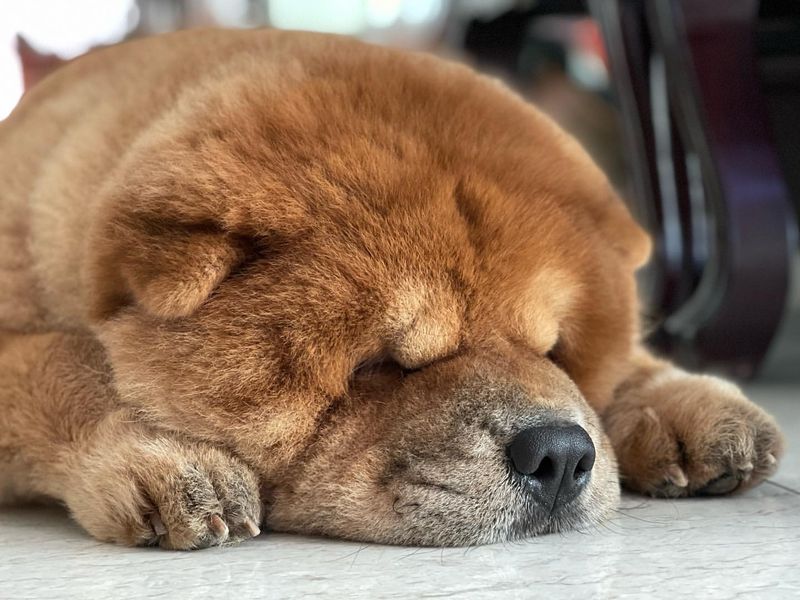
The Chow Chow is not your typical social butterfly. This breed is known for its aloofness and independence, traits that can pose challenges in a home with other pets.
Chow Chows are often staunchly loyal to their human family, but this loyalty doesn’t always extend to other animals. Their protective instincts can lead to territorial behavior, making it difficult to share space harmoniously with other pets.
Owners need to socialize Chow Chows early and often to help them adjust to a multi-pet household. Establishing clear rules and boundaries is essential to prevent any dominance issues. While Chow Chows can be loving companions, they require a dedicated owner who can guide them in navigating the complexities of a diverse pet environment.
10. Weimaraner
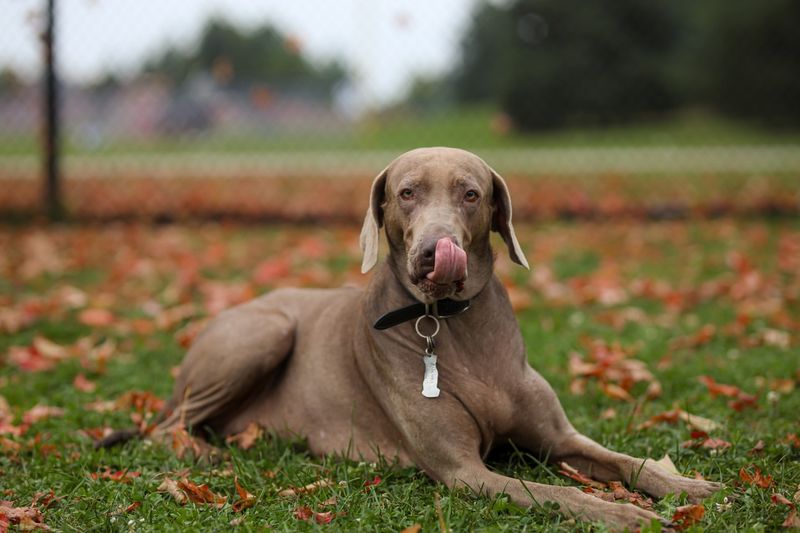
Weimaraners, with their sleek coats and graceful build, are often called “Velcro dogs” because of their attachment to humans. While their loyalty is commendable, it can also become problematic in a household with other pets.
This breed’s need for constant companionship means they might not take kindly to sharing attention with other animals. Weimaraners are known for their high energy levels and intelligence, traits that require significant engagement to keep them happy.
In a multi-pet home, it’s crucial to provide Weimaraners with ample exercise and mental stimulation. Owners should focus on structured activities that allow these dogs to expend their energy positively. Socialization with other pets from a young age can help Weimaraners adapt to sharing their space, though patience and consistency are key.
11. Shar Pei
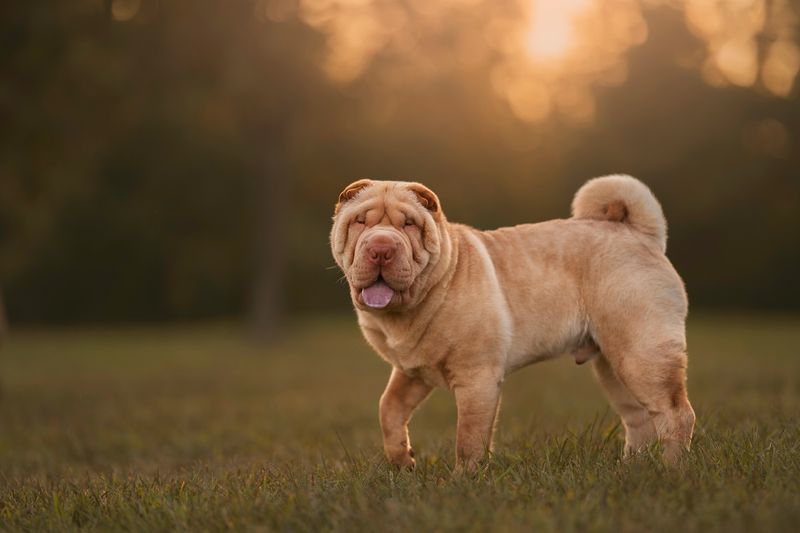
This breed is often reserved and can be wary of strangers, including unfamiliar animals. The Shar Pei, known for its distinctive wrinkles and calm demeanor, might not be the best fit for a multi-pet household.
Shar Peis are known for their strong-willed nature and can occasionally be aloof, traits that might lead to friction with other pets. Their independent streak means they might not always welcome sharing their space or human attention.
To ensure a peaceful home environment, Shar Pei owners need to focus on early socialization and consistent training. This breed benefits from having a dedicated space where they can retreat and relax away from the bustle of a busy household. Providing structure and routine helps Shar Peis feel secure and reduces the likelihood of conflicts.
12. Siberian Husky
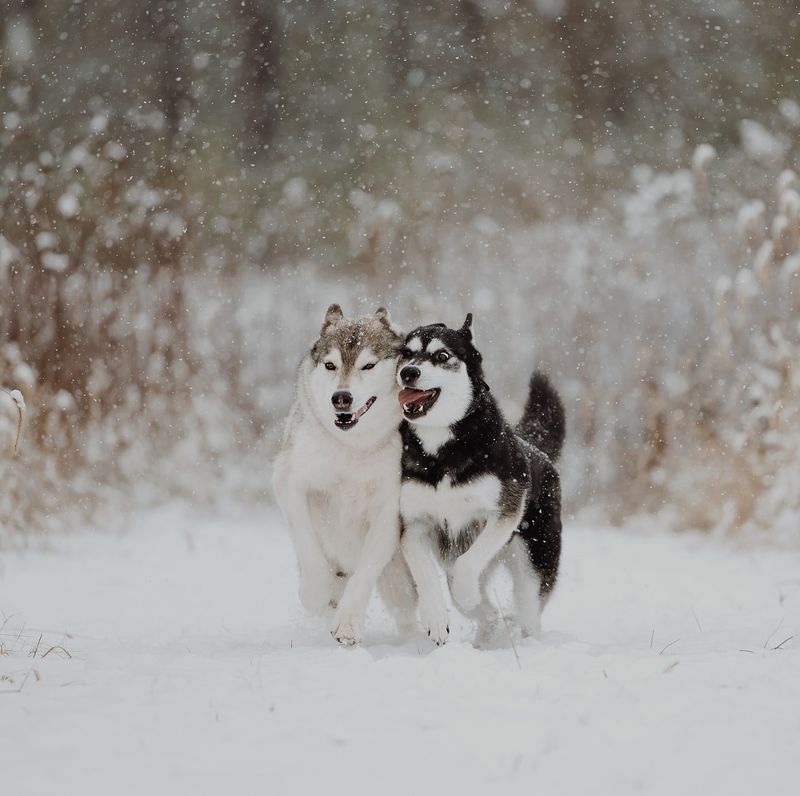
Siberian Huskies, with their striking appearance and boundless energy, are known for their independent spirit. While they are often friendly, their strong-willed nature can pose challenges in a multi-pet household.
This breed’s high prey drive means smaller pets might be seen as sport rather than companions. Their penchant for exploration and mischief can lead to unintentional chaos, especially if not adequately trained.
Owners of Siberian Huskies need to invest in early training and socialization to encourage harmony in a multi-pet environment. These dogs require plenty of physical and mental stimulation to keep them satisfied and reduce the likelihood of disruptive behavior. While Siberian Huskies can coexist with other pets, it requires patience and effort to ensure they respect boundaries.
13. Beagle
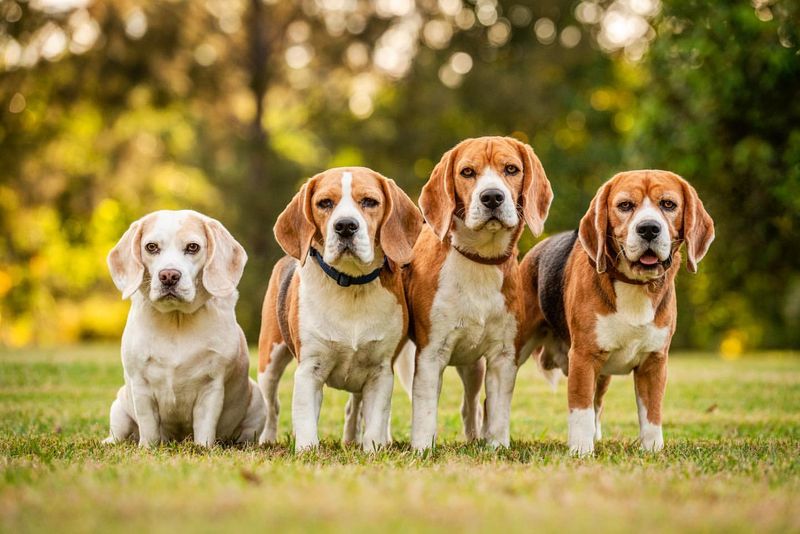
With their adorable faces and keen sense of smell, Beagles are often seen as merry hounds. However, their curious nature and strong hunting instincts can make them challenging companions in a multi-pet household.
This breed is known for its determination and sometimes stubborn streak, which can lead to clashes with other pets, especially smaller animals. Beagles might follow their nose into trouble, sometimes encroaching on other pets’ territories.
Ensuring a peaceful coexistence requires Beagle owners to engage them in regular exercise and activities that satisfy their need for exploration. Early socialization and training are crucial to help Beagles understand boundaries and foster positive relationships with other pets. This breed thrives in environments where they can use their nose to their heart’s content, ideally without stepping on any paws along the way.
14. Scottish Terrier
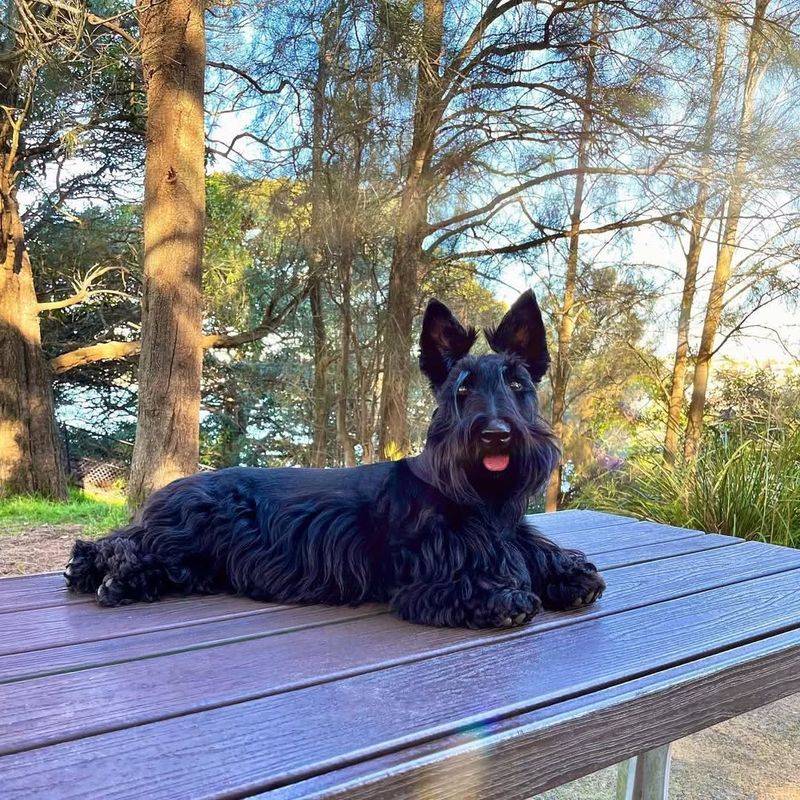
The Scottish Terrier, or “Scottie,” with its dignified demeanor and independent spirit, might not gel well with a multi-pet environment. Known for their self-assured nature, Scotties often prefer to do things on their terms, which can lead to friction with other pets.
This breed’s strong prey drive means small pets might be seen as fair game, while their stubborn streak can make training a challenge. Scotties are fiercely loyal to their human companions, sometimes leading to possessive behavior around other animals.
In a multi-pet home, Scottie owners should focus on early and consistent training to manage this breed’s independent streak. Ensuring they have their own space to retreat to can help minimize conflicts. Engaging them in activities that challenge their intelligence and satisfy their instincts can foster a more harmonious environment.
15. Border Collie
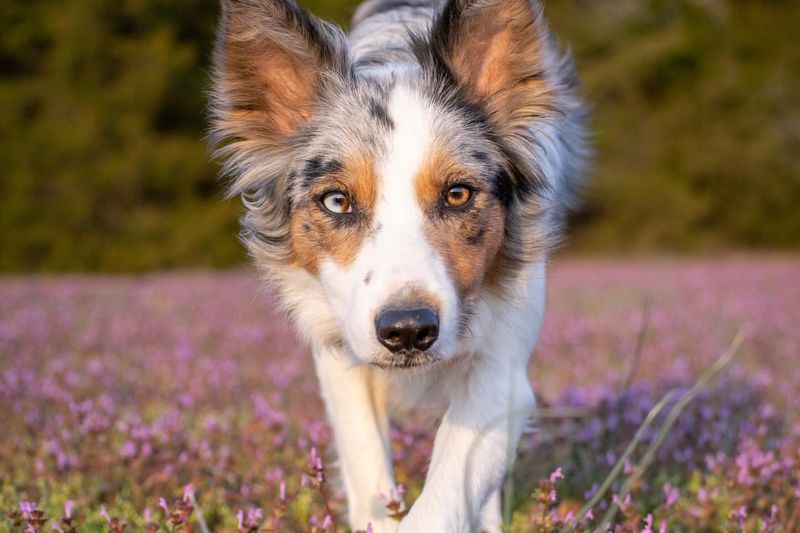
Renowned for their intelligence and herding instincts, Border Collies can be a handful in a multi-pet household. This breed’s high energy levels and need for mental stimulation mean they require a lot of engagement, which might not always be feasible in a bustling home.
Their herding instinct can lead to attempts at organizing other pets, which might not be appreciated by their four-legged companions. Border Collies are known for their intensity and drive, sometimes resulting in overly focused or obsessive behavior.
Owners of Border Collies should provide ample opportunities for exercise and mental challenges to keep them content. Early socialization and training are key to teaching Border Collies how to interact with different pets positively. While they can thrive in a multi-pet environment, it requires dedication and creativity from the owner to channel their natural instincts constructively.
16. Cairn Terrier
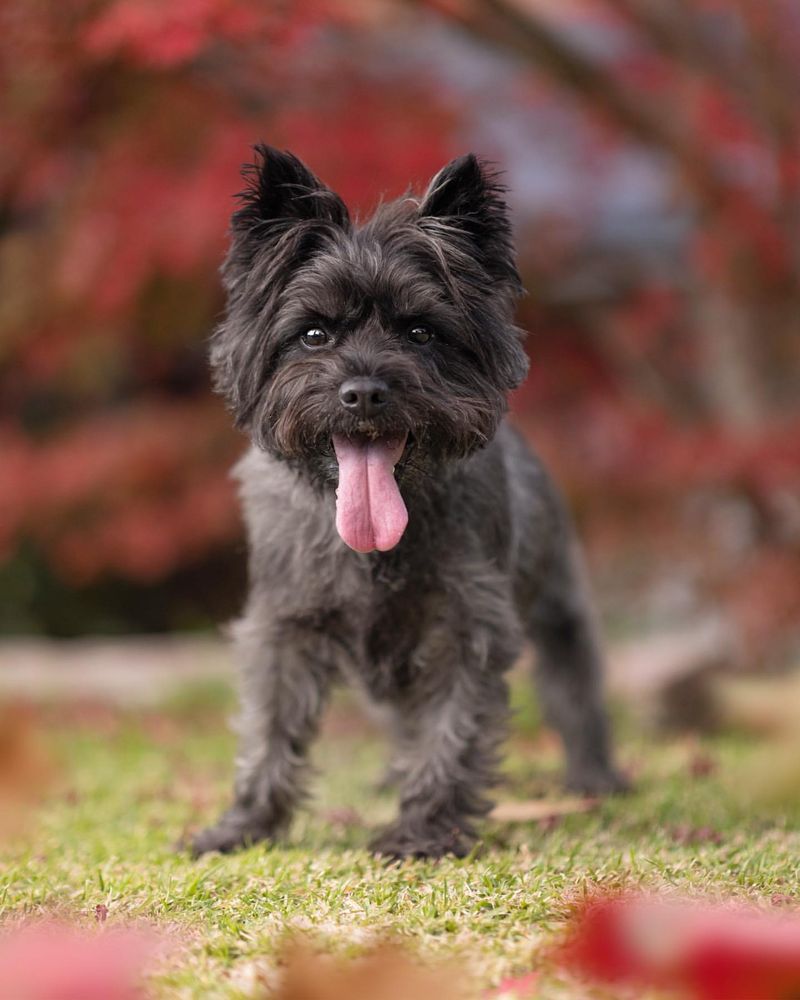
Cairn Terriers, with their spirited personalities and boundless curiosity, can be challenging in a multi-pet household. Known for their tenacity and independence, Cairn Terriers might not always mesh well with other pets.
This breed has a strong prey drive, often seeing smaller animals as quarry rather than companions. Their inquisitive nature can lead to endless exploration, sometimes resulting in territorial disputes with other pets.
To create a harmonious home, Cairn Terrier owners should focus on early socialization and establish clear rules and boundaries. Engaging them in activities that challenge their minds and satisfy their hunting instincts can help minimize conflicts. Providing a balance between independence and structure is crucial for a peaceful coexistence.
17. Doberman Pinscher
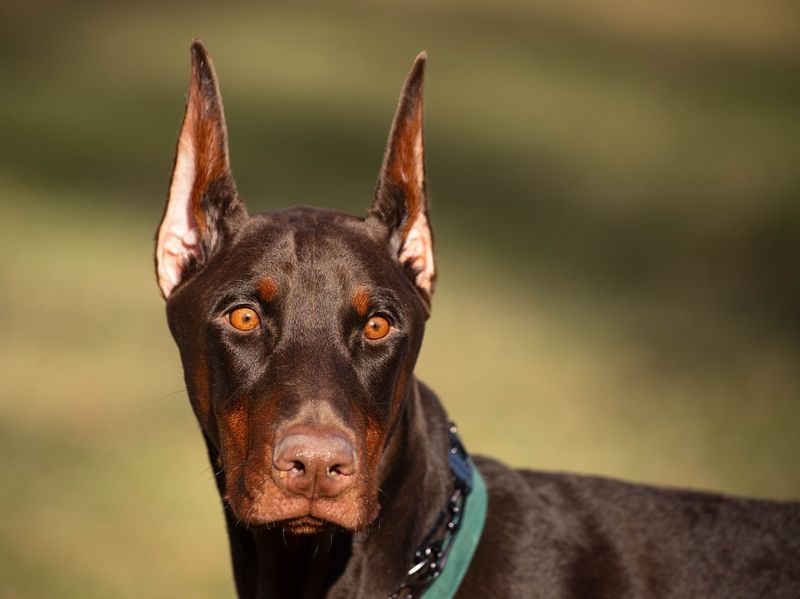
Doberman Pinschers, known for their elegance and loyalty, can be a formidable presence in a multi-pet household. This breed’s protective instincts can sometimes translate into possessive behavior over their human family and home.
Dobermans are known for their intelligence and need for structured engagement, requiring an owner who can provide clear leadership. Without guidance, their dominant nature might lead to conflicts with other pets, particularly if they feel their territory is being invaded.
To foster harmony in a home with Dobermans, early training and socialization are essential. Owners should establish themselves as confident leaders, ensuring that Dobermans understand their place within the family unit. Providing plenty of exercise and mental challenges can help channel their energy positively, reducing the likelihood of disruptive behavior.
18. Belgian Malinois
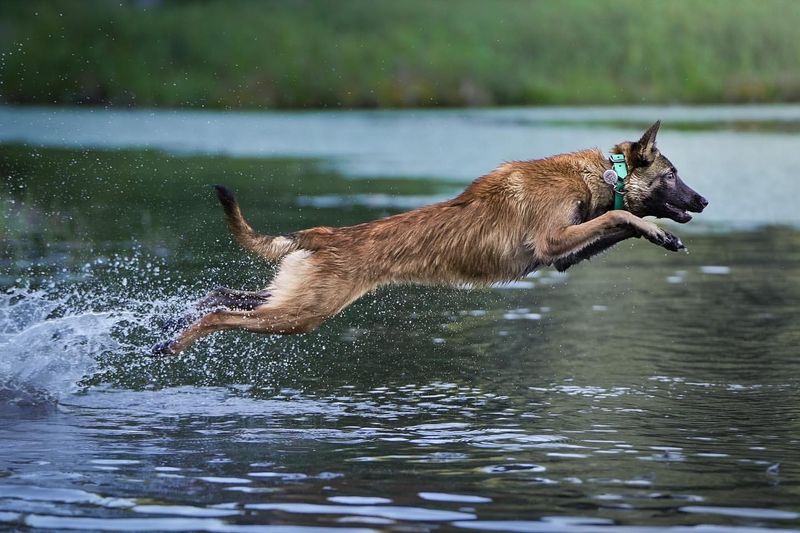
Belgian Malinois can also be demanding in a multi-pet household. This breed’s high energy and drive for work mean they require constant mental and physical stimulation, which can be hard to balance in a busy home.
Malinois are intensely loyal and protective, sometimes becoming possessive of their family members. This can lead to rivalry with other pets if not managed correctly. Their innate desire to work means they need a purpose, and without one, they might resort to disruptive behaviors.
Owners of Belgian Malinois should engage them in structured activities like obedience training or agility sports to keep them satisfied. Early socialization is crucial to help them adapt to living with other pets. Establishing clear boundaries and a routine can foster a peaceful coexistence, though it requires commitment and effort.
19. Australian Cattle Dog
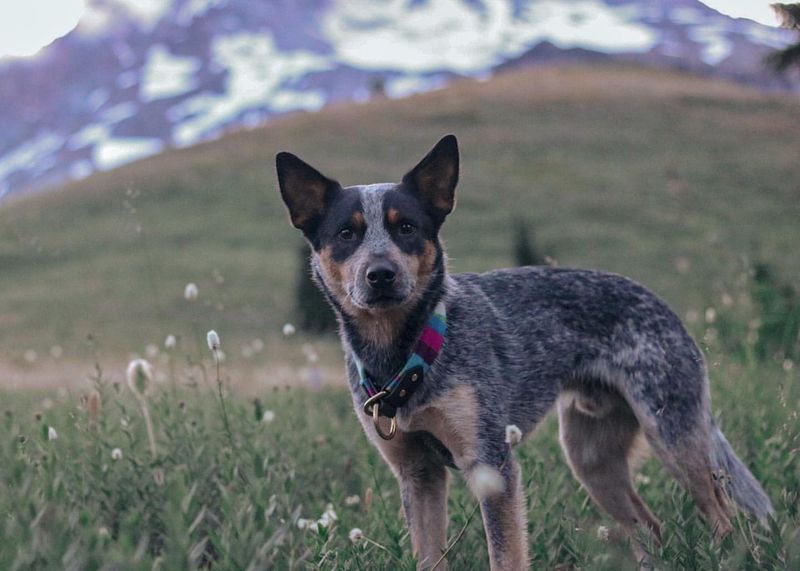
With their boundless energy and strong herding instincts, Australian Cattle Dogs can be a whirlwind in a multi-pet household. Known for their intelligence and drive, these dogs require significant engagement, which might not always be feasible in a busy home.
Their herding tendencies can lead to attempts at organizing other pets, sometimes resulting in conflicts. Australian Cattle Dogs are known for their independence and resilience, traits that can make training both a challenge and a necessity.
To ensure peace in a multi-pet home, owners should focus on providing ample exercise and mental stimulation for their Australian Cattle Dogs. Engaging them in activities that utilize their natural herding instincts can help redirect their energy positively. Early socialization and clear boundaries are essential to help them understand their role within the household.
20. German Shepherd
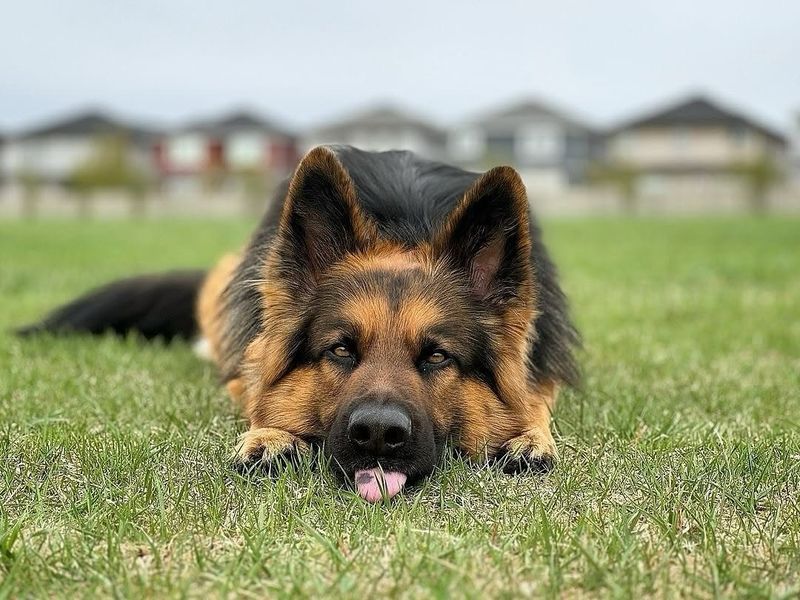
German Shepherds, known for their intelligence and versatility, are often seen as loyal protectors. While they can be great family pets, their strong protective instincts might not always be conducive to a multi-pet household.
This breed’s need for leadership and structure means they require clear guidance and boundaries. Without it, German Shepherds might become possessive of their family and territory, leading to tensions with other pets.
To foster harmony, owners should focus on early training and socialization, establishing themselves as confident leaders. Providing German Shepherds with mental and physical challenges can help channel their energy constructively. While they can thrive in a multi-pet environment, it takes patience and commitment to ensure they respect the presence of other animals.

